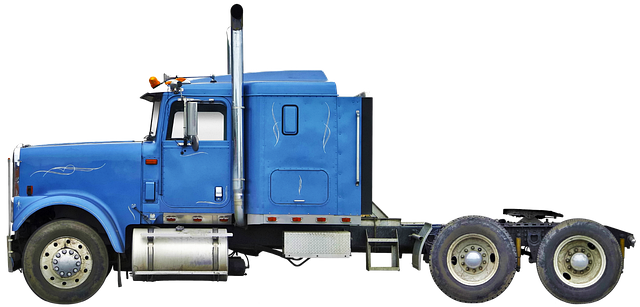Registering a car in California involves understanding specific requirements and gathering essential documents. This comprehensive guide walks you through the process, ensuring a smooth experience. From verifying your Vehicle Identification Number (VIN) through meticulous VIN check procedures to selecting the right registration class and paying associated fees, each step is crucial. By following these clear instructions, you’ll efficiently complete the car registration process and hit the California roads legally.
- Understand California Car Registration Requirements
- Gather Necessary Documents for VIN Verification
- Perform Vehicle Identification Number (VIN) Check
- Choose an Appropriate Registration Class and Pay Fees
- Submit Application and Receive Your Registration Certificate
Understand California Car Registration Requirements

Before registering your car in California, it’s crucial to understand the state’s specific requirements for vehicle identification number (VIN) verification. The California Department of Motor Vehicles (DMV) mandates that all vehicles be registered and titled with accurate VIN information. This includes undergoing a thorough vin inspection to ensure the vehicle’s identity is genuine and matches the records.
One efficient method for this process is through mobile vin verification services, which allow you to get instant validation of your car’s VIN. These services utilize advanced technology to cross-reference your vehicle’s unique identifier with comprehensive databases, providing accurate and up-to-date information crucial for a seamless registration experience. By employing a mobile vin verifier, you can streamline the initial steps of the registration process, ensuring you meet California’s stringent requirements without hassle.
Gather Necessary Documents for VIN Verification

Before you begin the registration process, it’s crucial to gather all the essential documents required for VIN verification. The Vehicle Identification Number (VIN) is a unique code that serves as a fingerprint for your car, and it needs to be verified during the registration. You’ll need to provide proof of ownership, typically through a vehicle title document. If you’ve recently purchased the vehicle from a dealership or private seller, ensure you have the title in hand.
Additionally, prepare your valid driver’s license or state-issued ID card. For vehicles over 10 years old, California requires a safety and emission inspection certificate, often called a smog certificate. Some areas might also ask for proof of insurance. Having these documents ready makes the VIN inspection process smoother, especially if you opt for a mobile vin inspection service to save time.
Perform Vehicle Identification Number (VIN) Check

Before you register your car in California, it’s crucial to perform a Vehicle Identification Number (VIN) check. This step is vital for ensuring the vehicle’s history is clear and accurate. A VIN verification helps determine if there are any outstanding issues, such as outstanding loans or accidents, that could impact the registration process. In California, you can conduct this vin inspection either through an official DMV service center or, conveniently, with a mobile vin verification service.
A mobile vin inspection offers significant advantages, including saving time and effort by allowing the check to be done at your convenience. This method streamlines the initial steps of the registration process, making it easier for both new and existing California vehicle owners. By ensuring your VIN is in order, you’re taking a significant step towards a smooth car registration experience.
Choose an Appropriate Registration Class and Pay Fees

When registering your car in California, understanding the appropriate registration class is key. Different types of vehicles require specific classifications, which can impact fees and requirements. For instance, passenger cars, motorcycles, and light trucks often fall under standard categories with corresponding charges. However, specialized vehicles like recreational vehicles (RVs) or classic cars might have distinct classes and associated costs. It’s crucial to verify your vehicle’s identification number (VIN) through a reliable vin inspection service to ensure you’re assigning it to the right class.
The registration process involves paying various fees, which can be navigated online or at a California Department of Motor Vehicles (DMV) office. These fees cover the cost of registration, license plate issuance, and often include additional charges for optional services. You might also consider using a mobile vin verifier to streamline the initial verification step, ensuring a smoother registration experience.
Submit Application and Receive Your Registration Certificate

After completing your vehicle’s inspection and ensuring all necessary documents are in order, it’s time to submit your application for registration. This crucial step involves filling out the official form provided by the California Department of Motor Vehicles (DMV). Here, you’ll need to provide detailed information about your vehicle, including its make, model, year, and unique Vehicle Identification Number (VIN). The VIN is a critical component in the registration process as it facilitates the vin verification process.
Submitting this application triggers a series of events leading up to the issuance of your registration certificate. A mobile vin inspector or vin inspection service can aid in ensuring the accuracy of your VIN data, which is essential for a seamless registration experience. Once processed, you’ll receive your registration certificate, officially registering your vehicle in California and allowing you to legally operate it on public roads.
Registering a car in California involves several straightforward steps, from understanding state requirements to submitting the necessary documents. Ensure you have all your paperwork in order, including proof of ownership and identification. Perform a VIN verification to ensure the vehicle’s authenticity, then select the appropriate registration class and pay the associated fees. After a successful application process, you’ll receive your registration certificate, marking your vehicle’s official entry into California’s roads. Remember, a thorough vin verification is key to a smooth registration experience.
